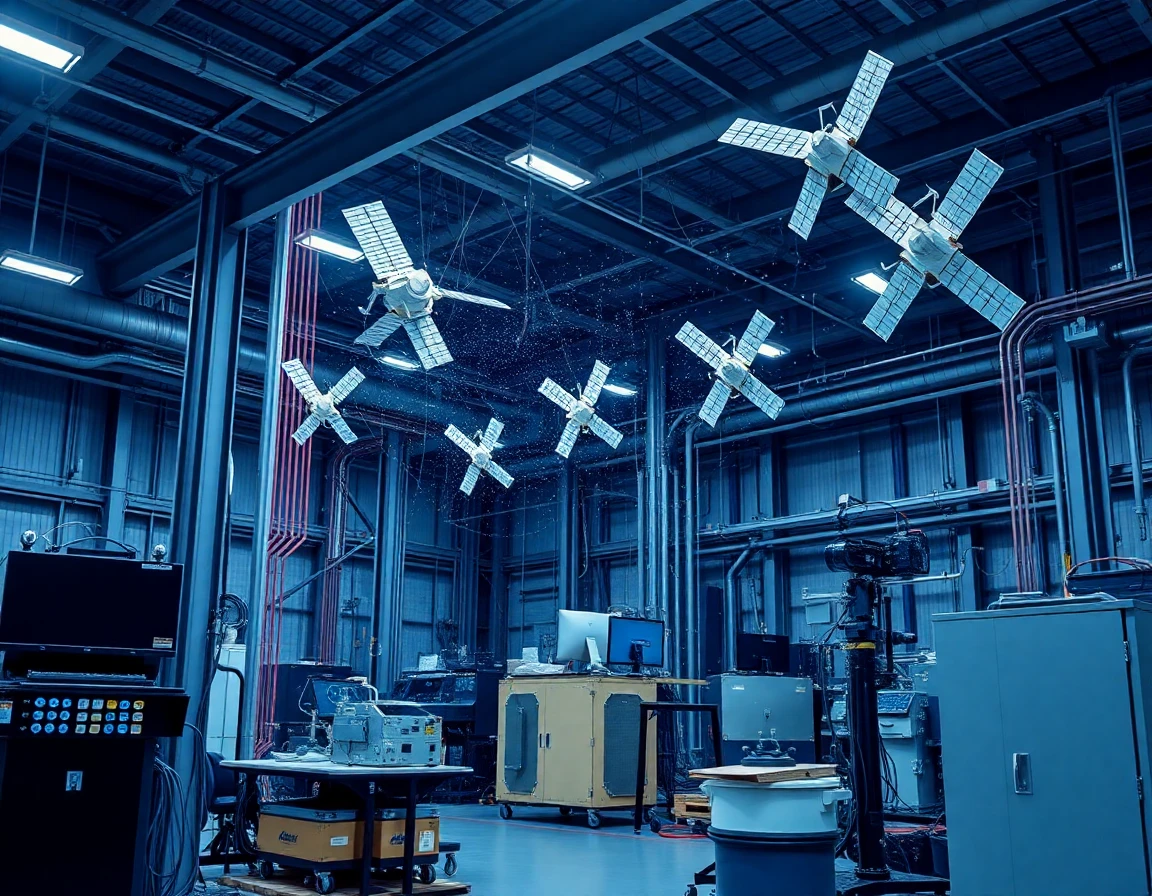Introduction
In recent years, the rapid expansion of satellite constellations has transformed the landscape of global communications and internet accessibility. Companies like SpaceX, OneWeb, and Amazon are leading the charge with ambitious projects aimed at providing high-speed internet coverage to even the most remote regions of the planet. This article delves into the technical aspects, industry insights, and future implications of these satellite networks.
Understanding Satellite Constellations
A satellite constellation refers to a group of satellites working in tandem to provide comprehensive coverage of Earth’s surface. These networks often operate in low Earth orbit (LEO), where satellites can transmit data with minimal latency. The ideal configuration involves multiple satellites that can communicate among themselves, ensuring continuous coverage as each satellite passes over different geographical areas.
Technical Specifications
Modern satellite constellations utilize advanced technologies to ensure robust performance. For instance, the use of precision accelerometers allows these satellites to maintain their orbits accurately, minimizing drift and ensuring optimal positioning for communication.
Additionally, advancements in thermal management systems are critical. They help regulate the temperature of satellite components, ensuring they operate efficiently even in the harsh conditions of space. The integration of high-capacity communication transceivers enables faster data transmission rates, essential for meeting the demands of users on the ground.
Key Players in the Market
SpaceX Starlink
SpaceX’s Starlink project is perhaps the most well-known satellite constellation initiative. With plans to deploy thousands of satellites, Starlink aims to provide global broadband coverage. As of late 2023, Starlink has already launched over 3,000 satellites, with ongoing plans to expand this number significantly.
OneWeb
OneWeb is another major contender, focusing on delivering internet connectivity to underserved populations worldwide. The company has successfully launched hundreds of satellites and aims to provide nationwide coverage in several countries by 2024. OneWeb’s approach emphasizes partnerships with local telecommunications providers to enhance service delivery.
Amazon’s Project Kuiper
Amazon is also entering the satellite constellation arena with Project Kuiper, aiming to deploy 3,236 satellites in LEO. This initiative not only seeks to enhance internet access but also aims to integrate seamlessly with Amazon’s existing services, leveraging its extensive logistics and distribution networks.
Industry Insights
The expansion of satellite constellations is fundamentally reshaping the telecommunications landscape. According to industry analysts, the global satellite communications market is projected to reach $134 billion by 2026, with LEO satellite constellations playing a pivotal role in this growth.
“The advent of satellite constellations represents a paradigm shift in how we think about connectivity,” says Dr. Emily Thompson, a leading expert in aerospace technologies. “These networks can bridge the digital divide, bringing internet access to millions who have been left behind by traditional providers.”
Challenges and Considerations
Despite the promising outlook, several challenges remain. The increasing number of satellites raises concerns over space debris and the potential for collisions in orbit. Regulatory hurdles also pose significant obstacles, as countries grapple with the implications of foreign satellite networks operating within their jurisdictions. Additionally, ensuring cybersecurity for satellite communications is becoming increasingly vital as reliance on these systems grows.
Future Developments
As satellite constellations continue to expand, we can expect several key advancements:
- Enhanced Signal Processing: The integration of components like the DBY011550M System, a lithium niobate optical chip designed to improve signal processing, will be crucial in enhancing the effectiveness of satellite communications.
- Inter-satellite Links: Future satellites are likely to incorporate advanced inter-satellite links, enabling direct communication between satellites for faster data relay and reducing latency.
- Collaboration with Ground Networks: There will be a growing trend toward collaboration between satellite operators and terrestrial networks, creating hybrid systems that leverage both satellite and ground-based infrastructure to improve service reliability and coverage.
Conclusion
The ongoing expansion of satellite constellations marks a significant milestone in global communication efforts. By combining advanced technologies and innovative strategies, these networks are poised to provide unprecedented access to information and services worldwide. As developments unfold, the aerospace and telecommunications industries must adapt and innovate to harness the full potential of these satellite networks, ensuring they meet the evolving needs of a connected world.
References
- Satellite Communications Market Projections, Market Research Future, 2023.
- Dr. Emily Thompson, Aerospace Technology Expert, Interview, 2023.



